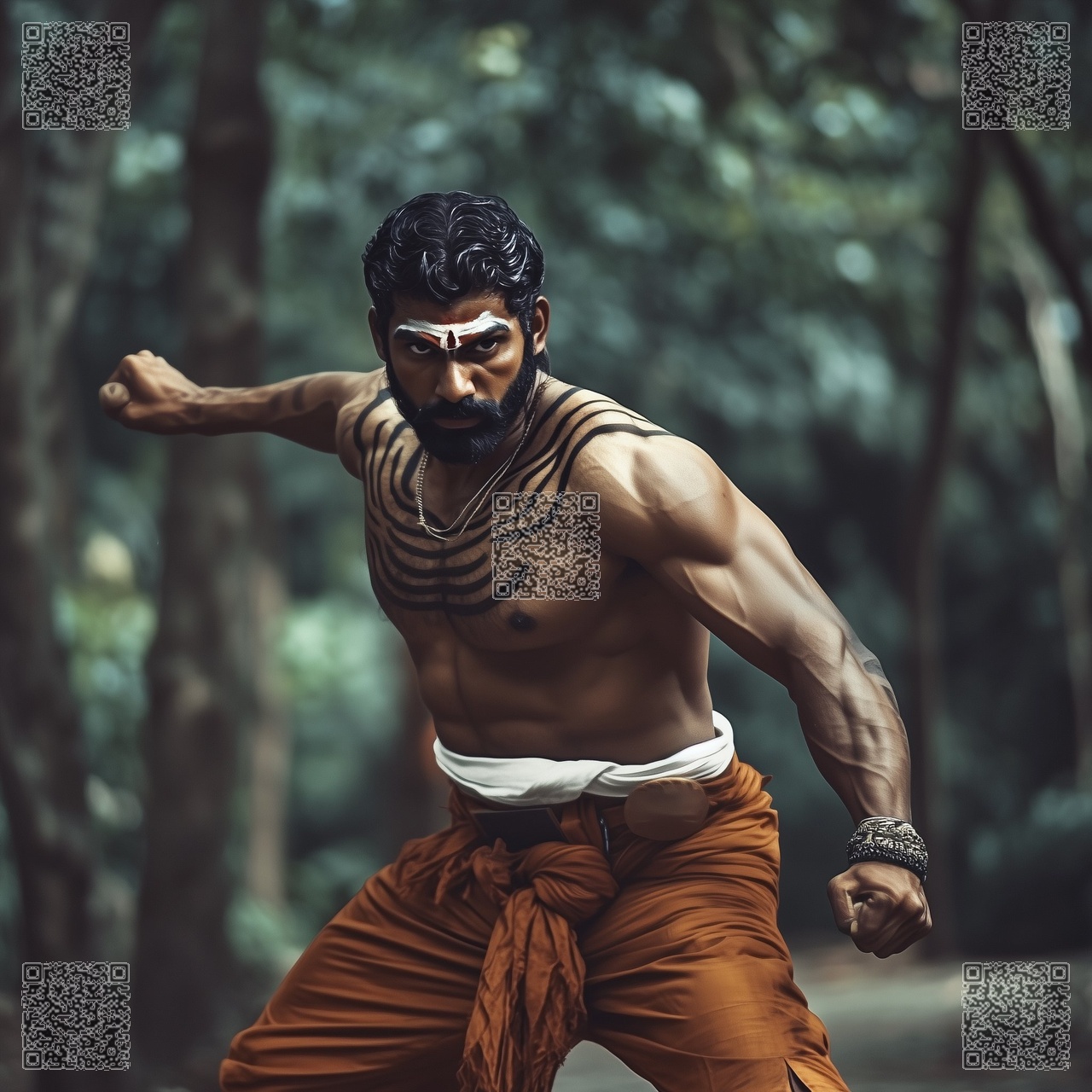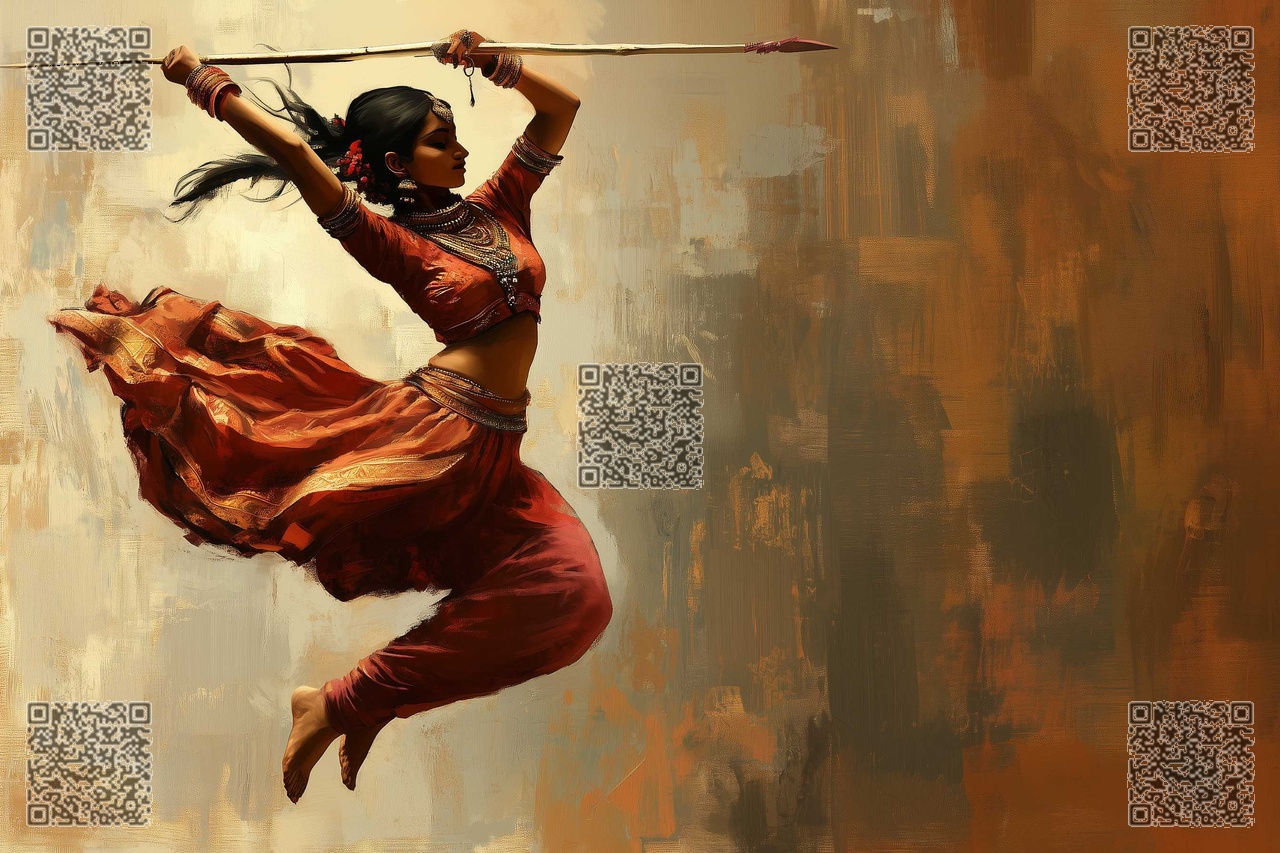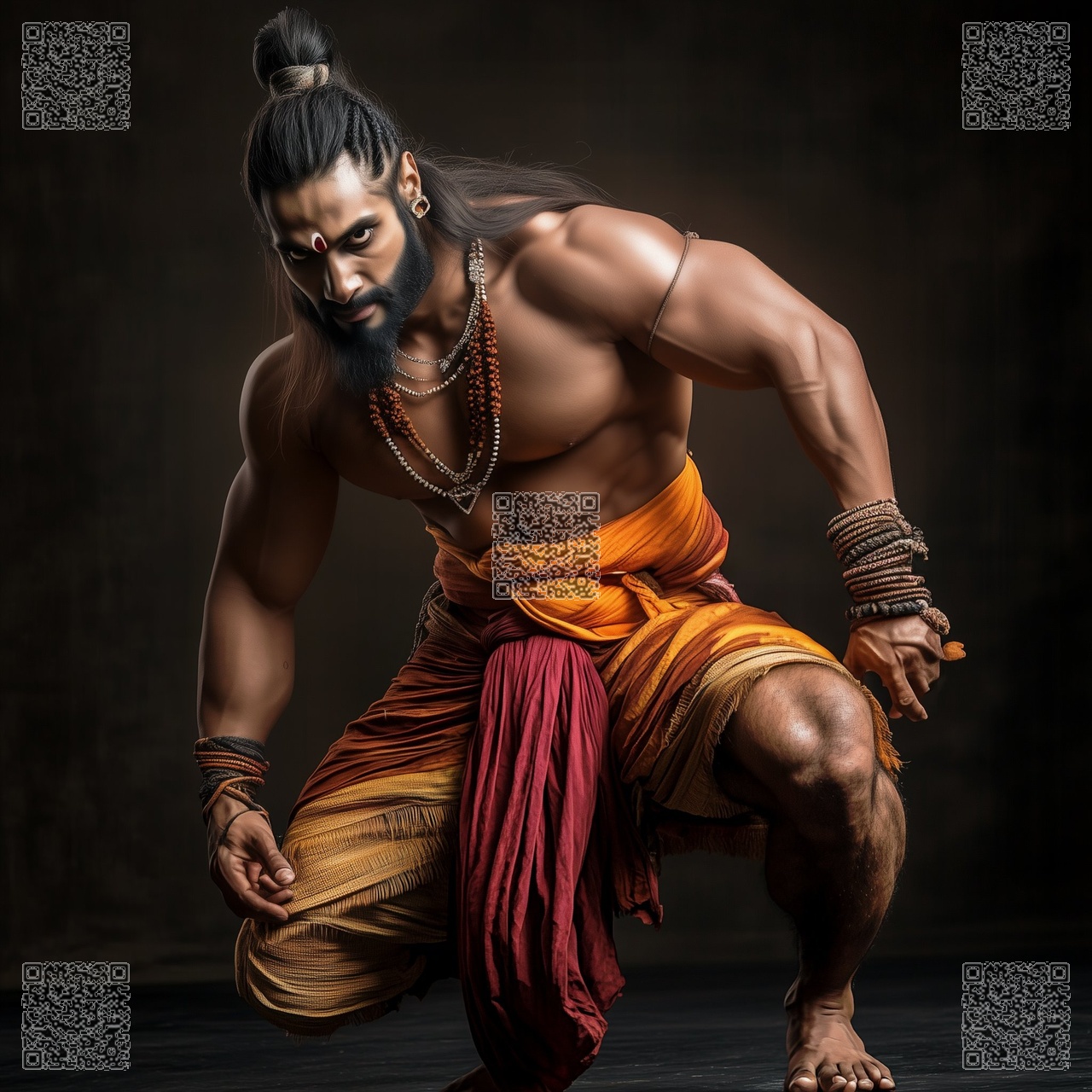In Kalari Payattu, one of the most distinctive aspects is the influence of animal movements, which are integrated into the combat style and training regimen. Two such forms, Puli Angam (Tiger form) and Simha Angam (Lion form), are based on the characteristics and fighting strategies of these powerful animals. While both forms emphasize ferocity and strength, they differ significantly in terms of movement dynamics, combat approach, and symbolism.
Puli Angam (Tiger Form)
Puli Angam, or the Tiger form, is inspired by the tiger’s agility, stealth, and precision. Tigers are known for their ability to move silently, strike suddenly, and overpower their prey with sharp, targeted attacks. In Kalari Payattu, the Puli Angam reflects these attributes through fluid and agile movements, which involve:

Speed and Stealth: Practitioners of Puli Angam focus on moving quickly and quietly, emphasizing the element of surprise in combat. The idea is to mimic the tiger’s silent stalking before launching an attack. The fighter maintains a low stance, allowing for swift, smooth transitions between offensive and defensive moves.
Explosive Attacks: Just as a tiger pounces on its prey with great power and accuracy, practitioners of Puli Angam are trained to deliver sudden, forceful attacks. These attacks aim at vital points with precision and speed. The focus is on short bursts of energy to overwhelm the opponent before they can counter.

Clawing Motions: The hand techniques in Puli Angam often mimic a tiger’s claws, with wide, sweeping strikes that target the opponent’s vulnerable areas. The practitioner may use claw-like hand positions to attack the face, neck, or chest, simulating the way a tiger claws its prey. Flexibility: Puli Angam emphasizes flexibility and dexterity, allowing practitioners to evade attacks with quick, flowing movements and to counterattack with agility.
Simha Angam (Lion Form)
Simha Angam, or the Lion form, on the other hand, is based on the power, majesty, and dominating presence of the lion. Lions are known for their raw strength, boldness, and the ability to face challenges head-on. In Kalari Payattu, the Simha Angam reflects these qualities through more forceful, direct combat techniques:

Strength and Dominance: Unlike the stealthy approach of Puli Angam, Simha Angam is about asserting dominance over an opponent. The practitioner moves with confidence and maintains an upright, commanding posture. The lion’s roar is metaphorically represented in the bold, assertive movements of the Simha Angam fighter.
Powerful Strikes: Simha Angam practitioners focus on delivering heavy, forceful strikes that are designed to subdue the opponent with sheer strength. The movements are less about speed and more about power. The practitioner uses a combination of fists, elbows, and knees to deliver crushing blows, much like a lion pouncing directly on its prey with full force.

Direct Confrontation: In contrast to the ambush-style tactics of Puli Angam, Simha Angam encourages direct engagement with the opponent. It relies on overpowering the adversary in close combat, with an emphasis on holding ground and facing the challenge head-on.
Roaring Energy: The philosophy behind Simha Angam also includes psychological intimidation, as lions are known to roar to assert their dominance. Similarly, practitioners may use loud, assertive shouts or war cries to build up energy and intimidate opponents, channeling the lion’s commanding presence.
Differences in Movement Dynamics
Flow vs. Force: The movements in Puli Angam are smooth, quick, and designed to confuse and outmaneuver the opponent, much like the tiger’s agile stalking and rapid pouncing. In contrast, Simha Angam relies on solid, grounded movements, reflecting the lion’s more forceful, straightforward approach. Evading vs. Confronting: Puli Angam emphasizes evading and using stealth to create openings for precise attacks, whereas Simha Angam is all about engaging the opponent directly and overpowering them with strength.

Stances: Puli Angam typically involves lower stances and more lateral, fluid movements, allowing the practitioner to stay light on their feet and move swiftly. Simha Angam, by contrast, uses more upright stances that enable the practitioner to maintain stability and deliver forceful strikes. Symbolism and Philosophy
While both forms draw from the animal kingdom, the symbolism associated with each is different. The tiger in Puli Angam represents a cunning predator, able to assess its opponent and strike with speed and precision. The lion in Simha Angam symbolizes royalty, leadership, and strength, displaying an unyielding confidence in its power and dominance.

Conclusion
Puli Angam and Simha Angam offer two contrasting but complementary approaches in Kalari Payattu. Puli Angam highlights stealth, agility, and swift attacks, while Simha Angam emphasizes strength, dominance, and direct confrontation. Both forms enrich the practitioner’s combat skills, teaching the balance between flexibility and power, cunning and courage. Each style channels the essence of its respective animal, offering a unique perspective on combat strategy in Kalari Payattu.



